Reviews
Allison Anders, Dean Lent, & Kurt Voss
USA, 1987
Credits
Review by Victoria Large
Posted on 18 September 2011
Source 16mm print
Categories American Punk
Border Radio is something of a latecomer to the punk movie tradition. Released in 1987, it arrived more than ten years after the release of the first Ramones album and well after punk had become part of the mainstream American consciousness. Set mainly in Los Angeles, the film is filled with echoes of the L.A. scene that had already been immortalized in The Decline of Western Civilization, Suburbia, and Repo Man. But Border Radio offers a different slant on punk than its predecessors. More than any other feature in the HFA’s retrospective, Border Radio takes a backward look at punk.
The word “afterglow” isn’t quite what I’m looking for, because that’s too gentle and romantic for music that puts me more in mind of a streaking comet than a setting sun, but there’s a duskiness to Border Radio all the same, a liminal mood to fit the film’s title. The characters aren’t casualties of the punk scene so much as they’re drifting, aware that something has passed and unsure of what happens next.
The film is affectionate toward punk even as it retains a certain skepticism regarding its own nostalgia, and some of its funniest moments stem from that skepticism. “You gotta understand, it’s tough being a seminal L.A. rock artist, y’know? It’s a big responsibility,” drawls Chris, a layabout and hanger-on attempting to explain his favorite punk idol’s decision to abscond to Mexico. Chris doesn’t seem to register the irony of his words, but we do, in the same way that we register the absurdity of Iris Berry’s turn as a scenester who simply can’t stop going on about how much better the L.A. scene was back in 1978. Bits like these have perhaps gotten better with age: now that we’ve been subjected to a seemingly endless supply of punk postmortems, seeing a young fan ceaselessly eulogizing the scene that she’s still apparently a part of, or hearing someone use the phrase “seminal L.A. rock artist” in casual conversation feels both funny and prescient.
Co-directors Allison Anders, Dean Lent, and Kurt Voss - who began work on the film while they were still students at UCLA - shot on a shoestring budget over the course of four years. They credit their cast with contributing to the film’s story and dialogue. The plot is slim, but it holds the film together: Chris D., erstwhile lead singer for The Flesh Eaters, stars as Jeff Bailey, our seminal L.A. rock artist. Jeff flees to Mexico after getting caught ripping off the safe at a local club and spends much of the movie across the border and on his own, in the midst of personal and artistic crisis. Meanwhile, the people that Jeff leaves behind: his goofy sometimes-roadie Chris, his bandmate Dean, and most poignantly, his wife Lu and daughter Devon, are left to cope with Jeff’s absence and the aftermath of the theft. Border Radio is said to have originated as a kind of film noir, but the finished project has a lighter touch than these origins suggest. It’s a rambling and quietly existential film, and its humor is wry but not biting.
The fact that the performers were mostly non-professionals contributes to the loose, improvisatory feel of the production. This was a rare outing as an actor for Chris D. and it remains the only film credit for Anders’ sister Luanna, who plays her namesake Lu. John Doe of the essential L.A. punk band X makes his debut as an actor in this film after appearing as himself in The Decline of Western Civilization, and musicians fill many of the film’s bit parts, including Texacala Jones as Devon’s frighteningly manic and inattentive punk babysitter. The performances aren’t always polished, but they are often amusing, and there are small moments here that resonate. What’s more, Border Radio carries on punk’s storied D.I.Y. tradition: if anyone can start a band, can’t anyone be a movie star?
Good humor and authentic punk ambience are not Border Radio’s only virtues, however. It’s a visually beguiling film, shot in black and white on location in California and Mexico. Vost would go on to have a lengthy career as a cinematographer, and he displays a wonderful eye as co-director and cinematographer for this film. There are images that linger on the brain: a guitar burns on the shore of a Mexican beach; children race down the sand shooting bows and arrows; a herd of wild horses passes by, with one of them trailing a rope from its neck. Even the everyday becomes defamiliarized and strangely beautiful in this dreamy monochrome world: a truck pulls into an empty drive-in movie theater, beads of water build up on a shower curtain, Chinese lanterns sway and neon signs glow in the Los Angeles night. There’s poetry in these images; they’re worth savoring.
Appropriately, even as it signals the end of its musical era (Berry’s nameless scenester speculates that something new might take punk’s place in “five to eight years.”), Border Radio heralds the coming of a particularly vibrant era in American independent film. Anders would go on to direct Gas, Food, Lodging, one of the many indies that garnered wide attention in the mainstream in the early nineties and helped to redefine what audiences think of when they of indies. In that way Border Radio, an undervalued and immensely likable film in its own right, also makes for an important American artifact and a testament to the D.I.Y. ethos beyond the realm of punk.
More American Punk
-

Times Square
1980 -
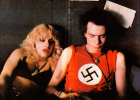
D.O.A.: A Rite of Passage
1980 -
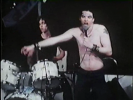
The Decline of Western Civilization
1981 -
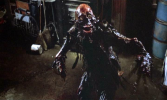
The Return of the Living Dead
1985 -
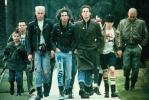
Suburbia
1984 -
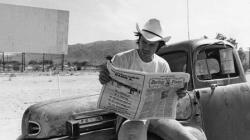
Border Radio
1987 -
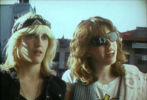
Desperate Teenage Lovedolls
1984 -

The Blank Generation
1976
We don’t do comments anymore, but you may contact us here or find us on Twitter or Facebook.



